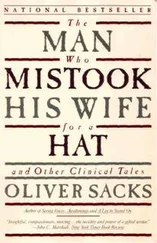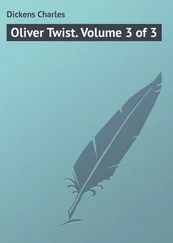Laura has quite a lot of apprehension about these odd episodes. On one of her maps, she wrote, “This all really scares me. Please, help me any way possible. Thanks!” She says she would give a million dollars to be free of these attacks — but she also feels they are a portal to another form of consciousness, another time and place, another world, although that portal is not under her control.
In his 1881 Epilepsy , Gowers gave many examples of simple sensory seizures and noted that auditory warnings of a seizure were as common as visual ones. Some of his patients spoke of hearing “the sound of a drum,” “hissing,” “ringing,” “rustling,” and sometimes more complex auditory hallucinations, such as music. (Music can be a hallucination in seizures, but real music may also trigger seizures. In Musicophilia , I described several examples of such musicogenic epilepsy.) 42 42 David Ferrier, a contemporary of Gowers’s, moved to London in 1870, where he was mentored by Hughlings Jackson (Ferrier became a great experimental neurologist in his own right — he was the first to use electrical stimulation to map the monkey’s brain). One of Ferrier’s epileptic patients had a remarkable synesthetic aura, in which she would experience “a smell like that of green thunder.” (This is quoted by Macdonald Critchley in his 1939 paper on visual and auditory hallucinations.)
There may also be chewing and lip-smacking movements in a complex partial seizure, occasionally accompanied by hallucinatory tastes. 43 43 Hughlings Jackson described such seizures in 1875 and thought they might originate from a structure in the brain located beneath the olfactory cortex, the uncinate gyrus. In 1898 Jackson and W. S. Colman were able to confirm this by autopsy in Dr. Z., a patient who had died of an overdose of chloral hydrate. (More recently, David C. Taylor and Susan M. Marsh have recounted the fascinating history of Dr. Z., an eminent physician named Arthur Thomas Myers whose brother, F. W. H. Myers, had founded the Society for Psychical Research.)
Olfactory hallucinations, either alone as an isolated aura or as a part of complex seizure, may occur in various forms, as David Daly described in a 1958 review paper. Many of these hallucinatory smells seem unidentifiable or indescribable (except as “pleasant” or “unpleasant”), even though a patient will have the same smell in every seizure. One of Daly’s patients said his hallucinatory smell odor was “somewhat like the smell of frying meat”; another said it was “like passing a perfume shop.” One woman would experience an odor of peaches so vivid, so real, that she was certain there must be peaches in the room. 44 44 In the 1946 film A Matter of Life and Death (called Stairway to Heaven in the United States), David Niven’s character, a pilot, has complex epileptic visions that are always preceded by an olfactory hallucination (the smell of burnt onions) and a musical one (a recurrent theme of six notes). Diane Friedman has written a fascinating book about this, indicating how meticulous the director, Michael Powell, was in consulting neurologists about the forms of epileptic hallucinations.
Another patient had a “reminiscence” associated with hallucinatory smells which “seemed to recall odors in his mother’s kitchen when he was a child.”
In 1956, Robert Efron, a naval physician, provided an extraordinarily detailed description of his patient Thelma B., a middle-aged professional singer. Mrs. B. experienced olfactory symptoms in her seizures, and she also gave a striking description of what Hughlings Jackson called doubled consciousness:
I can be perfectly well in every way when suddenly I feel snatched away. I seem to feel as if I’m in two places at once but in neither place at all — it is a feeling of being remote. I can read, write and talk and can even sing my lyrics. I know exactly what is going on but I somehow don’t seem to be in my own skin.… When this feeling happens I know that I’m going to have a convulsion. I keep trying to stop it from happening. No matter what I do, it always comes. Everything goes ahead like a railroad schedule. At this part of my attack I feel very active. If I’m home I make beds, dust, sweep or do the dishes. My sister says that I do everything at breakneck speed — I rush around like a chicken with his head cut off. But to me it all seems to be in slow motion. I am very interested in the time, I’m always looking at my watch and asking someone the time every few minutes. That is why I know exactly how long this part of the attack lasts. It has been as short as ten minutes or may last the better part of a day; it is real hell then. Usually it lasts about twenty to thirty minutes. All this time I feel that I’m remote. It is like being outside a room and looking in through a keyhole, or as if I’m God just looking down on the world but not belonging to it.
At about the halfway point in her seizure, Mrs. B. said, she would get a “funny idea” in her head involving the anticipation of a smell:
I expect to smell something at any moment, but I don’t yet.… The first time it ever happened, I was out in the country and I was feeling funny. I was in a field picking forget-me-nots. I remember very well that I kept smelling these flowers even though I knew they had no odour. For about half an hour I kept sniffing them because I was sure they would begin to smell soon … even though I knew perfectly well at that time that forget-me-nots have no odour at all.… I know it and don’t know it at the same time.
In this second phase of her epileptic aura, Mrs. B. continued to feel more and more “remote,” until finally she knew a convulsion was near. She would lie on the floor, away from the furniture, to avoid hurting herself during the convulsion. Then, she said:
Just when I seem to be as remote as I possibly could get, I suddenly get a smell like an explosion or a crash. There is no buildup. It is all there at once. At the same moment that the smell crashes through, I’m back in the real world — I no longer feel remote. The smell is a disgusting sweet, penetrating odour like very cheap perfume.… Everything seems very quiet. I don’t know if I can hear. I am all alone with the smell.
The smell would last for a few seconds and then go away, though the silence remained for five or ten seconds, until she heard a voice off to her right calling her name. She said:
This is not like hearing a voice in a dream. It is a real voice. Every time I hear it I fall for it. It is not a man’s voice or a woman’s voice. I don’t recognize it. There is one thing that I do know and that is if I turn towards the voice I have a convulsion.
She would try hard not to turn towards the voice, but it was irresistible. Finally, she would lose consciousness and have a convulsion.
Gowers had a “favorite” seizure, one that he returned to in his writing many times, for this patient, like Thelma B., had an epileptic aura that involved many different sorts of hallucinations, unfolding in a “march” or stereotyped progression of symptoms. This showed Gowers how an epileptic excitation might move about the brain, stimulating first one part, then another, and evoking corresponding hallucinations as it did so. He first described this patient in his 1881 book Epilepsy :
The patient was an intelligent man, twenty-six years of age, and all his attacks began in the same manner. First there was a sensation [under the ribs, on the left side] “like pain with a cramp;” then, this sensation continuing, a kind of lump seemed to pass up the left side of the chest, with a “thump, thump,” and when it reached the upper part of the chest it became a “knocking,” which was heard as well as felt. The sensation rose up to the left ear, and then was like the “hissing of a railway engine,” and this seemed to “work over his head.” Then he suddenly and invariably saw before him an old woman in a brown-stuff dress, who offered him something which had the smell of Tonquin beans. The old woman then disappeared, and two great lights came before him — round lights, side by side, which got nearer and nearer with a jerking motion. When the lights appeared the hissing noise ceased, and he felt a choking sensation in the throat, and lost consciousness in the fit, which, from the description, was undoubtedly epileptic.
Читать дальше












